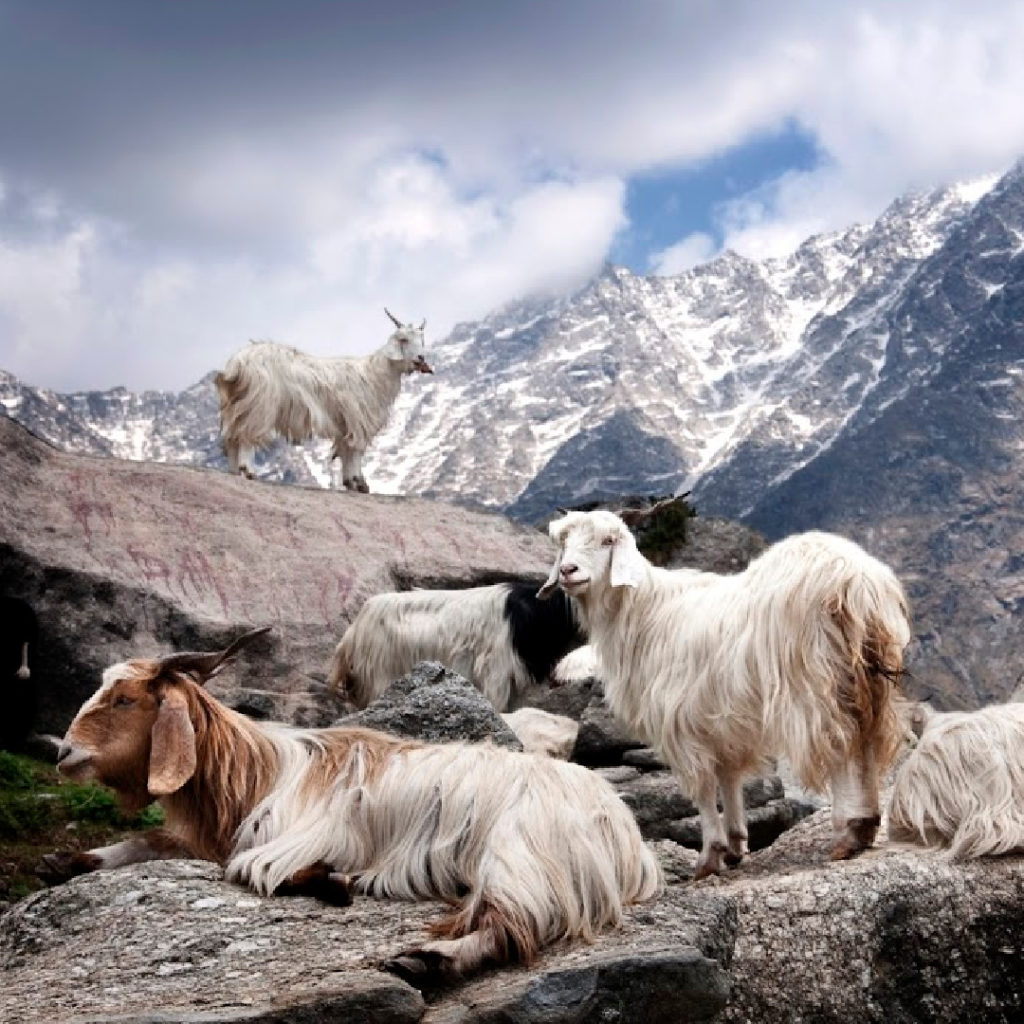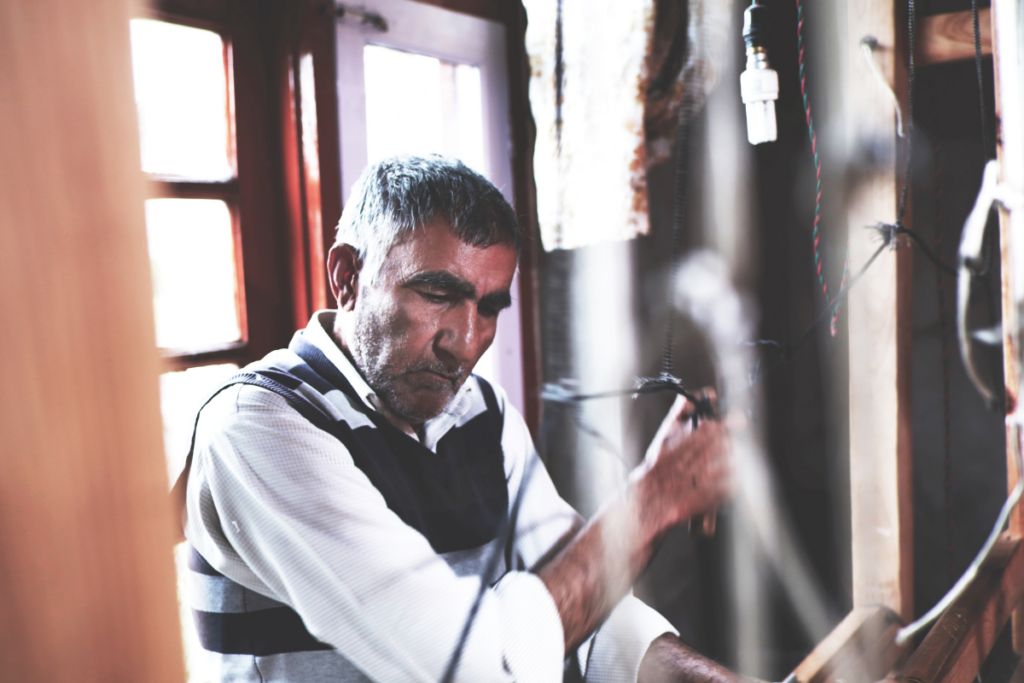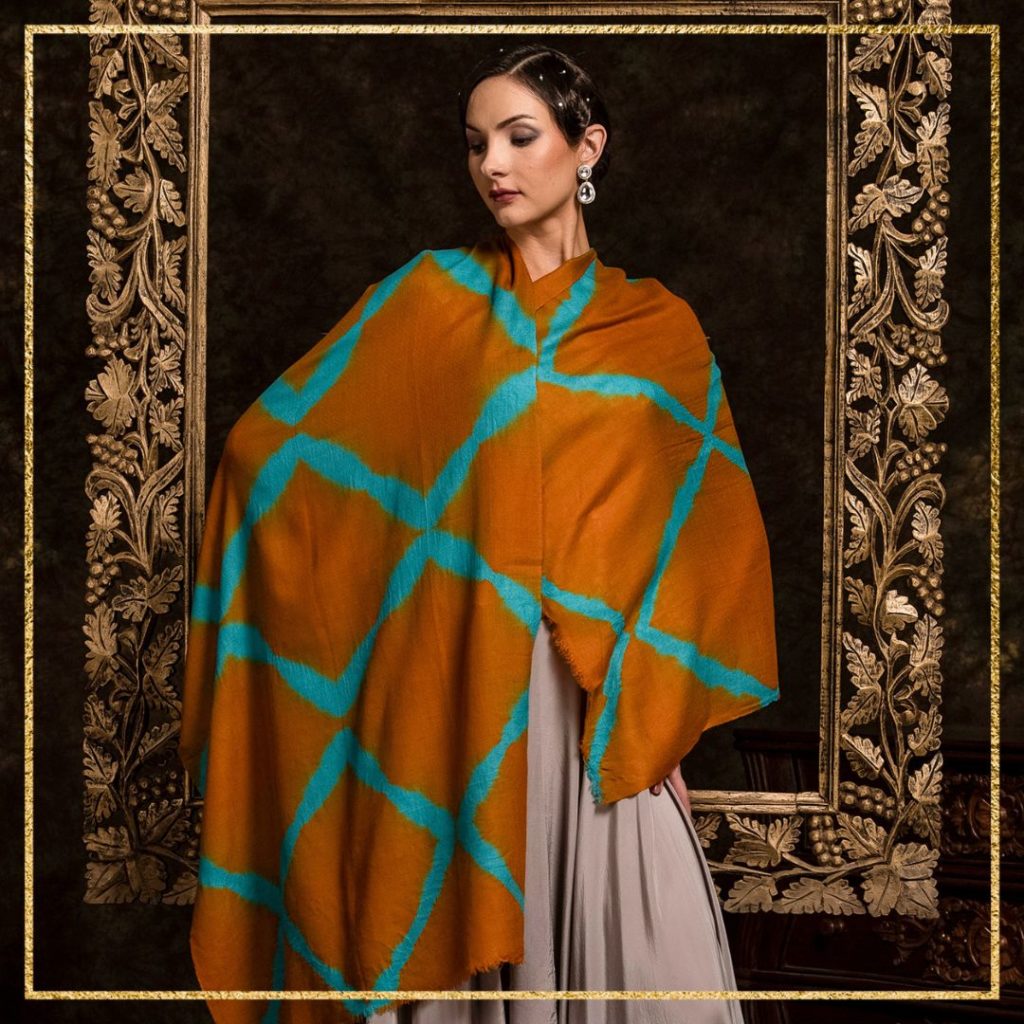The definition of beauty is enthralled in the nature of fashion. Towards the rays of the sun in Kashmir Valley, the artisans speak of the Pashmina Art in a way of gratitude. Pashmina is the finest of crafts that have been worked upon by the most skilled Artisans. Moreover, by these exquisitely skilled hands of artisans of the valley of Kashmir, the intricacy in the handworks is attained. Embroidered Pashmina is the eldest Craft of the valley of Kashmir. Moreover, the craft has its heritage in the air and at every corner of the valley. Kashmir has been the sole region where the craft of embroidered Pashmina is excelled to its height from the 16th century. Moreover, Pashmina Craft has been cherished in the valley for ages. With the growing eras, the craft gleamed in many forms and diverse styles.
Procurement of Ladakhi Cashmere

The Changhthanghi mountains of the Ladakh region are at high altitudes. Therefore, the winter in the region is more than -20°C. The habitat is harsh in winter. A rare breed of goat dwells at the feet of the Changhthanghi Mountain. The breed is called the Changra or Changhthanghi breed. The goats are known as Changra Goats of Cashmere goats. These goats are raised by the local tribe called the Changpa tribe. The herders herd the goats mainly for the collection of thick wool. The thick wool they develop on their bodies in cold winters to combat the chill of the season. Eventually, in summers, they shed the wool off against rocks and trees to feel the air of summer. Also, the wool is combed out by the herders by hand. This wool is called Cashmere wool. It is the finest Cashmere in the world.
Spinning and Weaving in Kashmir
The tufts of Cashmere wool leave the Ladakh region to reach the valley of Kashmir. The tufts are packed in small packets. The art of Pashmina caters to these tufts of Cashmere wool. Therefore, the Cashmere wool is cleaned, soaked, and dried in the sunlight to get the dirt and grime of any sort apart. Afterward, the Cashmere wool is taken to the households where women folk spin the Cashmere wool into fine yarn. The spinning process is done on a wheel of wool called yinder in the local language. The women spun the Cashmere wool diligently to get the finest Cashmere yarn. The yarn is collected around the spindles for further processes.

Further, the Cashmere yarn is taken to the local karkhanas/workshops where several handlooms are fixed. These handlooms are made of forest wood. The highly skilled artisans work upon the handlooms using their hands and feet in coordination with the process. The process of weaving is to use Cashmere yarn to create warps and wefts. Thus, producing a whole fine Cashmere fabric. The Cashmere produced is given the required dimensions. Thus, crafting the Pashmina shawl.
Shibori Style in Pashmina Art
Pashmina shawls give rise to several other styles by designing the intricacies unto themselves. The pigmenting of these takes place in the sphere of the local dyer called Rangur. The exquisite colours are dodged with authenticity in the Pashmina Shawls to scatter an aura of opulence in every direction. Shibori's technique of designing came into play after perfecting the Pashmina Shawl on a handloom.
Shibori is a Japanese manual resist dyeing technique that produces scattered patterns on a Pashmina Shawl. The technique produces numerous different patterns on the Pashmina Shawl in diverse colours. The process of the Shibori designing technique has steps to create the beautiful array of patterns on the Pashmina Shawl. Firstly, the Pashmina Shawl is folded or tied with wooden blocks or clips in a pattern that the design prescribed. Depending on the resist-dyeing technique chosen, there is the use of rubber bands, clips, clamps, or wooden blocks. Afterward, the Pashmina Shawl is pinched and bound off in different ways to craft the exquisite prints of Shibori. After the binding of the Pashmina Shawl, it is submerged in the dye bath. The dyes used are skin friendly as well as eco-friendly.

In Shibori designing, there are several ways of tying the Pashmina Shawl to get the required patterned print. The patterns include a cloud or floret pattern, a striated pattern, and geometric shapes like triangles and squares. After the Pashmina Shawl has been dyed, it is left to dry in the natural sunshine before untying the knots. Afterward, the Shibori Pashmina Shawls are permed on a roller iron and packed in for our warehouse.
Also read: IS CASHMERE THE SAME AS PASHMINA?
A Call from the history of Pashmina Art
The story of the finest Cashmere dates back to the 13th century. A sage from the Middle East, Mir Syed Ali Shah Hamdani started his journey with 700 craftsmen towards Kashmir. On his journey to Kashmir, he encountered the rare goats of Ladakh. He was enthralled by the fine wool on their bodies. He combed some out of them and made socks. The fine socks were warm and Pure. He gifted them to the ruler of Kashmir, Zain-ul-Abideen. In addition, he suggested making a local industry to curate the fine wool. His 700 craftsmen taught the people of Kashmir several skills. The skills proved to be the main requisite for curating the finest Cashmere. Thus, the art of Pashmina came into existence. The high skill prevails in the valley till now. It has been incorporated into the heritage of Kashmir Valley.
Endless collection of Pashmina Art
We, at pashmina.com, confer on the exquisite crafting of the finest Cashmere. It is the platform where Pashmina is handcrafted proving the high quality to be the main objective. Moreover, working day and night to preserve nature, the precursor of the Pashmina by welcoming and encouraging fashion that is sustainable. Artisans in the sphere of Pashmina.com have managed to look upon the heritage more efficiently. thus, preserving the artisans as well as reviving the Pashmina Craft.
Also read: IS PASHMINA EXPENSIVE?